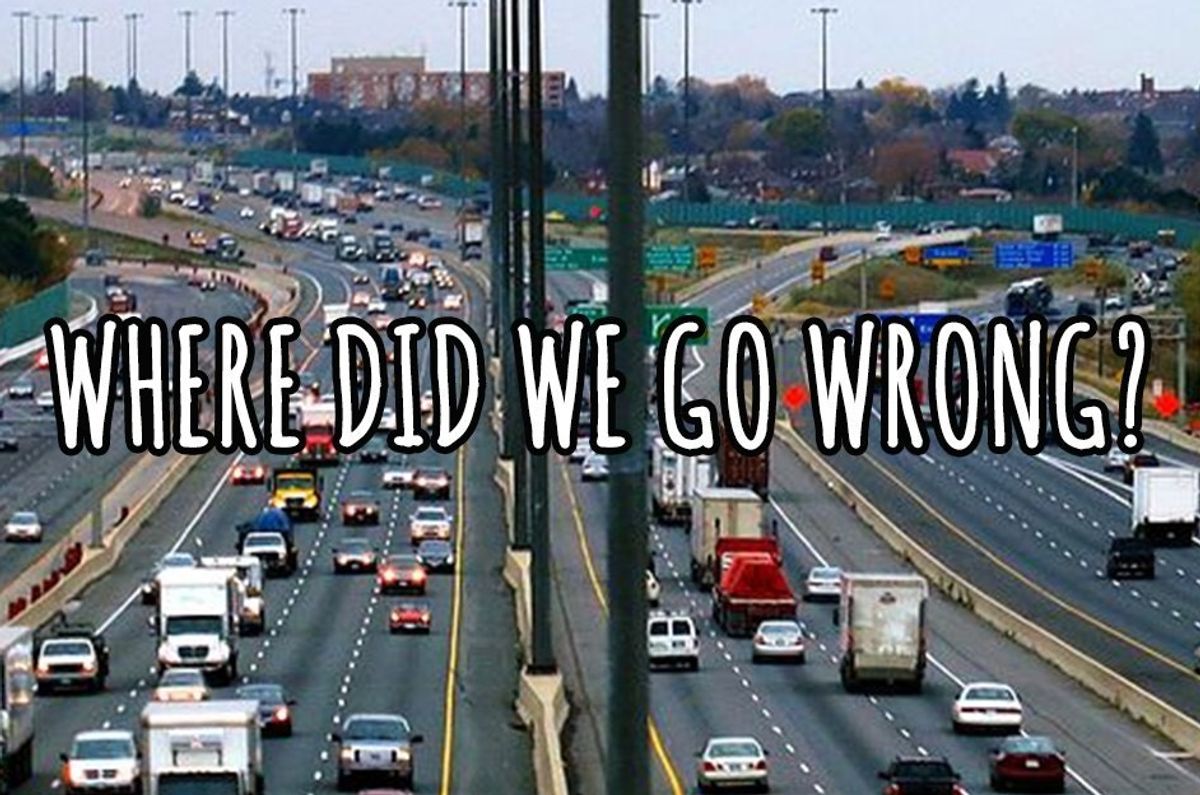I never realized how dumb our cities are until I saw what a smart one looks like.
There's community and there's commuting. Let's not confuse the two.

A busy freeway.
With the population growing and most of it happening in cities, these Canadian journalists wanted to take a closer look at whether our sprawling modern villages are up to the task of housing more humans.
Over half of the world lives in urban areas.
That includes over 80% of people in the United States and 81% of folks in Canada, where this report was produced. Therein lies the problem.

The busy traffic in the cities.
GIF created from YouTube video.
A lot of modern cities are being described as obesogenic environments.
Dr. Karen Lee can tell you what that means:

Design of cities makes us sick.
Image created from YouTube video.
Lee says our living environment has shaped public health for the worse:
"The ways in which we've been designing our cities have been making us sick. ... We've inadvertently designed physical activity out of our lives."
A healthy diet and regular physical activity are some of the most important things we can do for our health as individuals, but flawed city design has restricted opportunities for people to make those choices, which has contributed greatly to what are essentially public health epidemics — ones that require public health solutions.
Most cities have been designed for cars, not for people.
Look out your window and see for yourself. Brent Toderian, former chief city planner for Vancouver, says it's a big problem:

Cities are designed around using cars.
Image created from YouTube video.
Toderian says city design that makes it easier for people to get around instead of cars is one way to make physical activity a more natural part of our lives. And a lot of major cities are beginning to look to Latin America for ideas about how to achieve that.
In the 1990s, Medellín, Colombia, was one of the most dangerous cities in the world.
The constant threat of drug-related violence made it a place people wanted to escape.

Looking over Medellín, Colombia.
Image from YouTube video.
But today, Medellín stands as a model of creative urban design.
The city was desperate for change. And they may not have had the resources of the world's richest city, but with a few smart infrastructure investments, like outdoor escalators, suspended gondolas, and public gathering spaces, Medellín has been transformed into a place where people are proud to live.

A system of escalators
GIF created from YouTube video.

Gondolas moving people throughout the city.
GIF created from YouTube video.
Medellín's escalators cost only $6 million to build — "peanuts in the scheme of modern infrastructure projects.”
Architect Carlos Escobar sees these developments as much more than just infrastructure upgrades:
"The new transportation system in Medellín ... is not only a physical solution. It is not only transportation. It is also a social instrument that involves the community, that integrates the community in all the city."
Medellín is more connected than it's ever been, which makes it easier for workers to get to their jobs, and it brings more action to the local economy, strengthens the community, AND encourages people to be physically active.
If you'd rather spend more time in your community than in your car, give this post a share and help spark more people's imaginations. The solutions are out there. And they're not as costly or far-fetched as a lot of us might think.
This was a fantastic news report by CBC News (great job, Canada!). Here's just a snippet, but check out the whole video if you wanna nerd out a little more like I did:
This article originally appeared on 03.10.15

